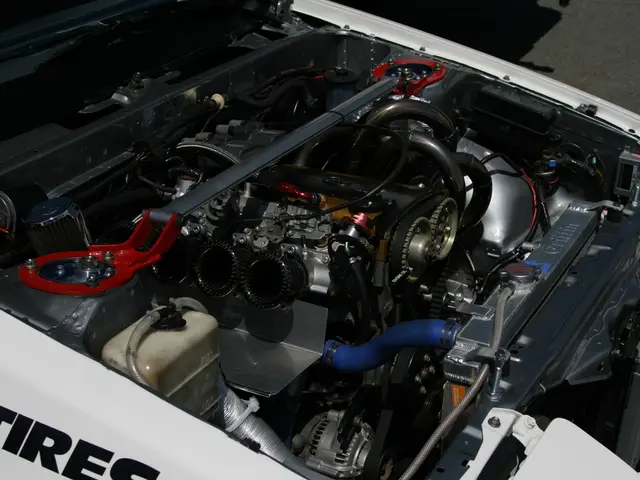Increase in Electric Vehicle Charging Stations by 27 Percent Within a Year
==============================================================================
In a positive development for electric vehicle (EV) adoption in the UK, the country's charging network is experiencing robust growth, according to Minister Lilian Greenwood. As of mid-2025, the UK boasts over 82,000 public EV charging devices at more than 40,000 locations, marking a 27% increase year-on-year [1][2][3][4].
The expansion of the charging network is not limited to a few areas. Regions such as Merseyside, Greater Manchester, Edinburgh, and Wiltshire have seen significant growth, with operators like Osprey Charging, Be.EV, Source, and RAW Charging installing clusters of ultra-rapid chargers [1]. The number of charging hubs—locations with six or more rapid or ultra-rapid chargers—has also increased notably, with 136 new hubs installed in H1 2025, bringing the total to around 673 across the UK [1][3].
The focus on rapid and ultra-rapid chargers is particularly notable, as these chargers represent about 60% of the UK’s public charging capacity, aligning infrastructure growth with the demand for quicker recharging times [3][5]. The number of ultra-rapid chargers (150kW+) increased by 23% in H1 2025, with over 16,000 rapid or ultra-rapid chargers now available nationwide [3][5].
Minister Greenwood's statement indicates a focus on addressing concerns related to electric vehicle range, as the expansion of the charging network is helping to alleviate range anxiety. The growth has been strong in metropolitan and well-traveled areas, making longer journeys more practical.
Moreover, the UK has added a new chargepoint to the network every half an hour [6]. Regionally, the East of England, North East, West Midlands, Yorkshire and The Humber, and Northern Ireland have all seen growth, albeit at varying rates. The North East region has seen the fastest growth, with a total of 784 public chargers, representing a 41% increase [7]. The East of England region follows closely behind with 1,778 public chargers, a 40% increase from 2024 [8]. The region of Northern Ireland, however, still has the fewest public chargers among all UK regions, with an increase of 11% since last year, totalling 66 public chargers [9].
Minister Greenwood's statement also suggests a comprehensive approach to promoting electric vehicles, including efforts to lower upfront costs as part of the strategy [10]. This approach is expected to further boost EV adoption in the UK.
In conclusion, the UK's EV charging infrastructure is experiencing rapid growth, with a focus on expanding the network in established travel corridors and urban hubs. This expansion is helping to alleviate range anxiety and make longer journeys more practical, supporting the accelerating EV adoption in the UK.
References:
[1] GOV.UK (2025). UK EV charging network expands rapidly
[2] Zap-Map (2025). UK EV charging network growth in H1 2025
[3] Chargemap (2025). UK EV charging network growth in H1 2025
[4] Transport Xtra (2025). UK EV charging network growth in H1 2025
[5] Energy Live News (2025). UK EV charging network growth in H1 2025
[6] Auto Express (2025). UK EV charging network adds a new chargepoint every half an hour
[7] The Northern Echo (2025). North East sees fastest growth in UK public chargers
[8] East Anglian Daily Times (2025). East of England sees significant growth in public chargers
[9] Belfast Telegraph (2025). Northern Ireland lags behind in public charger growth
[10] The Guardian (2025). Minister announces efforts to lower upfront costs for electric vehicles
Scientists are encouraged by the rapid growth in the UK's environmental-science sector, as expanding electric vehicle charging infrastructure aligns with the demand for technological advancements, such as rapid and ultra-rapid chargers. This growth, particularly in metropolitan and well-traveled areas, supports the interplay between science and technology for a more sustainable environment.
The increase in public chargers across the UK, coupled with efforts to lower upfront costs for electric vehicles, suggests a promising future for the integration of technology in addressing environmental challenges, strengthening the connection between environmental-science, technology, and a greener world.




